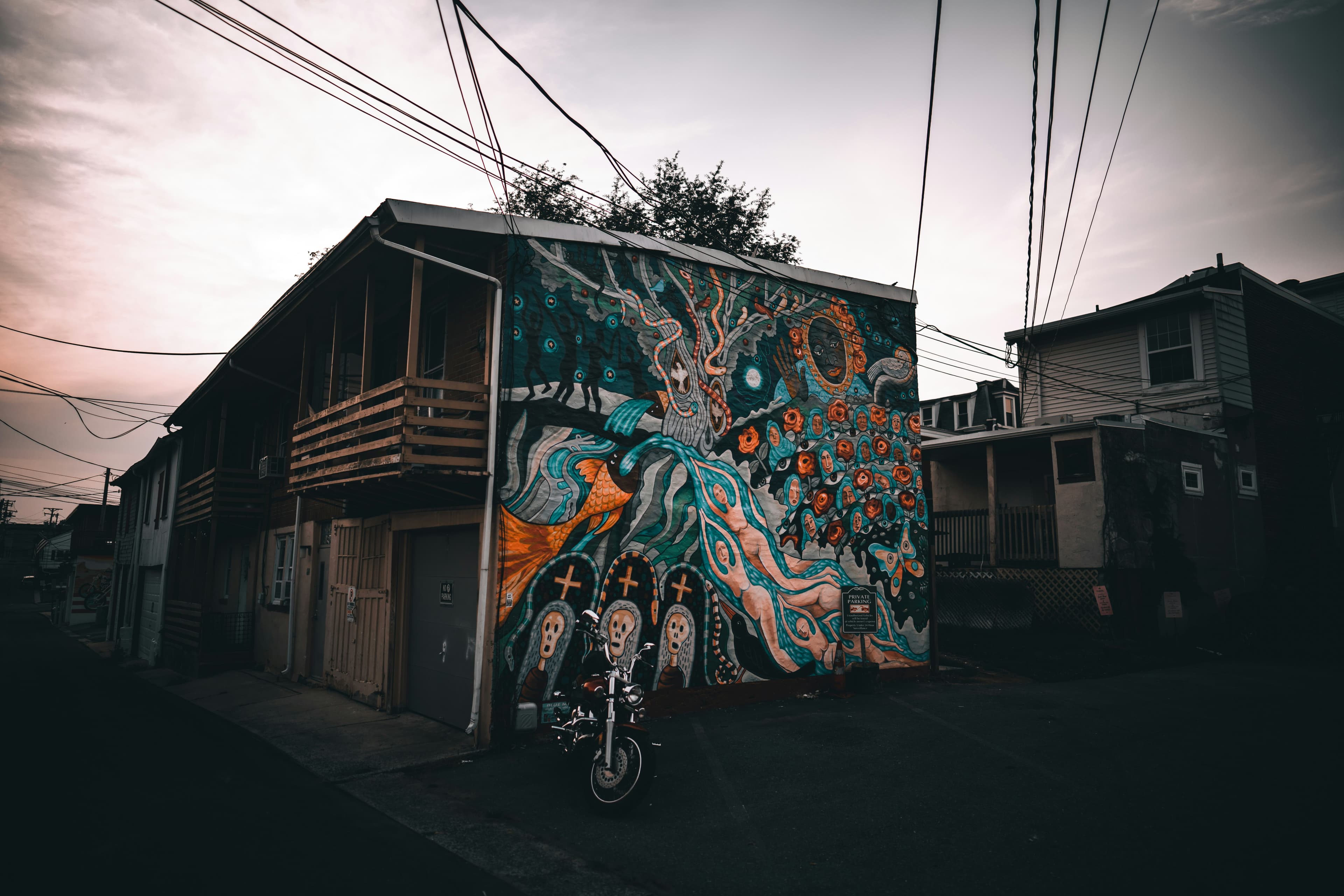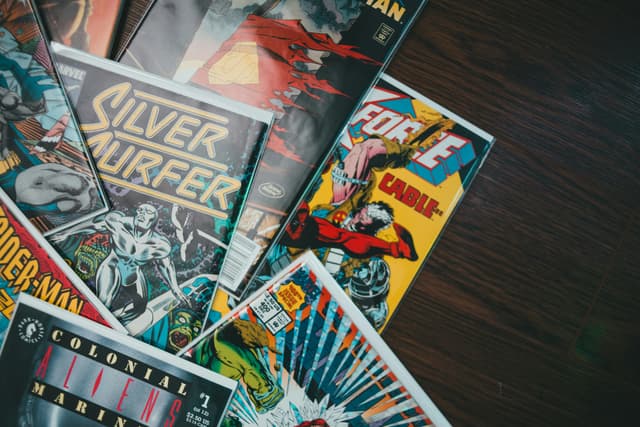Street art, once dismissed as graffiti or vandalism, has transformed into one of the most dynamic and influential forms of artistic expression in the world today. It has transitioned from the shadows of urban alleyways to the bright lights of galleries, museums, and global art markets. In this article, we explore the evolution of street art, its cultural significance, and how it has come to define the modern urban aesthetic.
The Early Days: A Rebellious Beginning
Street art’s origins trace back to the 1960s and 1970s, when young artists in cities like New York began spray-painting their names on subway cars, buildings, and walls as a form of rebellion and self-expression. In the beginning, it was more about marking territory and gaining recognition than creating art. The act of tagging became a symbol of resistance against authority and mainstream culture, creating a voice for those often marginalized by society.
One of the first widely recognized street artists, TAKI 183, gained fame in the late 1960s for tagging the streets of New York City, and his influence would go on to shape the future of street art. The practice was often looked down upon by city officials, and graffiti artists faced criminal charges, yet the art continued to thrive in the underground culture.
The Art of the Streets: The Emergence of Iconic Figures
As street art evolved, it began to move away from simple tagging and towards more intricate and thought-provoking artwork. By the 1980s, artists like Jean-Michel Basquiat and Keith Haring began to gain recognition for their street-based works that blurred the lines between graffiti and fine art. These artists helped redefine the cultural perception of street art, positioning it as a legitimate form of artistic expression rather than a mere subversive activity.
Jean-Michel Basquiat, with his raw, expressive style, incorporated a mix of graffiti, abstract art, and political commentary into his paintings. His works carried deep social and cultural messages, addressing themes of race, class, and identity. Basquiat's work transitioned from the streets to galleries, and his success played a pivotal role in elevating street art to the mainstream art world.
Keith Haring, another key figure of this time, used his street art as a tool for activism, tackling issues such as HIV/AIDS awareness, social justice, and human rights. His iconic “radiant baby” and bold, graphic style made him one of the most recognizable street artists in the world. Haring’s work helped to challenge traditional art spaces and made it clear that street art could be both politically charged and visually captivating.
The Global Movement: Street Art as Cultural Commentary
By the 1990s, street art had begun to take root globally. Cities around the world—London, Paris, Berlin, São Paulo—became hotspots for street artists, who used public spaces as their canvases. What was once an exclusively urban phenomenon became a universal form of artistic expression, attracting diverse voices from different backgrounds, cultures, and regions.
During this period, artists began to use street art as a medium to engage with social and political issues. Works began to address global themes such as poverty, environmentalism, war, and human rights. The iconic imagery of street art offered a way to communicate complex ideas and raise awareness in an immediate and visually striking way. Street art was no longer just about aesthetics; it had become a language of resistance, rebellion, and solidarity.
In the UK, artists like Banksy helped bring street art into the global conversation. His politically charged works, often laced with dark humor, tackled issues such as corporate greed, war, and inequality. Banksy’s anonymity only added to his mystique, and his pieces—often satirical and provocative—became highly sought-after in the art world. With his famous stencil technique, Banksy managed to challenge both the authority of the art world and the political systems he criticized.
Street Art in the Digital Age: The Intersection of Tradition and Technology
The rise of the internet and social media platforms in the 21st century has profoundly impacted the world of street art. What once existed as ephemeral works in public spaces are now documented, shared, and celebrated worldwide through digital platforms like Instagram, Twitter, and Pinterest. Street artists have embraced these platforms, using them as a way to gain recognition, expand their reach, and connect with audiences across the globe.
This digital revolution has led to an increasing commercialization of street art. Artists like Banksy and Shepard Fairey have leveraged their online presence to sell works and promote their art, with some pieces fetching millions of dollars at auction. Yet, this commercial success has also raised questions about the authenticity of street art. Can art that is commodified in this way still hold onto its original spirit of rebellion?
The digital age has also given rise to a new breed of street artist—the "Instagram artist." These artists often combine traditional street art techniques with new media, creating works that blur the boundaries between physical and digital art. Some have gained massive followings online and use social media to stage elaborate art installations, offering audiences a chance to experience their work in ways that were once unimaginable.
The Role of Street Art in Urban Landscapes
Street art has transformed the urban landscape, changing how we interact with and experience public spaces. Once seen as an eyesore, street art now adds vibrancy, color, and character to cities worldwide. Murals, graffiti, and installations have become permanent fixtures in urban environments, turning city streets into open-air galleries.
Many cities, recognizing the cultural value of street art, have begun to embrace it as part of their urban identity. In places like Melbourne, Berlin, and Bogotá, entire neighborhoods have been transformed by vibrant street art, attracting tourists and fostering local pride. Street art festivals, such as the Murals Festival in Montreal and Upfest in Bristol, showcase the work of both established and emerging artists, further cementing the cultural importance of street art in contemporary society.
In some cases, street art has become a form of gentrification, with neighborhoods becoming more desirable as a result of their vibrant murals. This phenomenon has sparked debates about the intersection of art, commerce, and urban development. However, even as it becomes more institutionalized, street art remains a form of expression that can challenge the status quo and provoke thought.
Street Art as a Mirror of Society: Reflection and Rebellion
One of the most powerful aspects of street art is its ability to reflect and challenge the issues of the time. Street art has always been a mirror of society—capturing the hopes, frustrations, and dreams of its creators while offering a critique of the world around them.
In recent years, street art has been used to respond to political and social movements, from the Black Lives Matter protests to the global climate change movement. The imagery created in the streets acts as a form of resistance, offering powerful visual statements that are accessible to everyone. From the anti-Trump murals that appeared across the United States to the feminist artwork seen in protests around the world, street art has become a tool for both protest and celebration.
Moreover, street art has evolved to be more inclusive and diverse, amplifying voices from marginalized communities and addressing topics such as gender equality, racial justice, and immigrant rights. Artists now use street art to create a sense of solidarity, bringing attention to causes that need public visibility.
The Future of Street Art: The Intersection of Innovation and Tradition
As street art continues to evolve, it remains a living, breathing form of artistic expression. Whether through the traditional use of spray paint and stencils or new mediums like augmented reality and interactive installations, street art is poised to continue shaping urban culture in the years to come. The fusion of technology with traditional techniques creates new possibilities for creativity, allowing artists to expand their reach and impact.
At the same time, street art maintains its rebellious, outsider ethos, refusing to be confined by the boundaries of galleries or art markets. It will continue to challenge our perceptions, provoke conversation, and, most importantly, remind us that art is not just something to be viewed but something to be experienced in the streets, where it interacts with the pulse of everyday life.
Loading...



